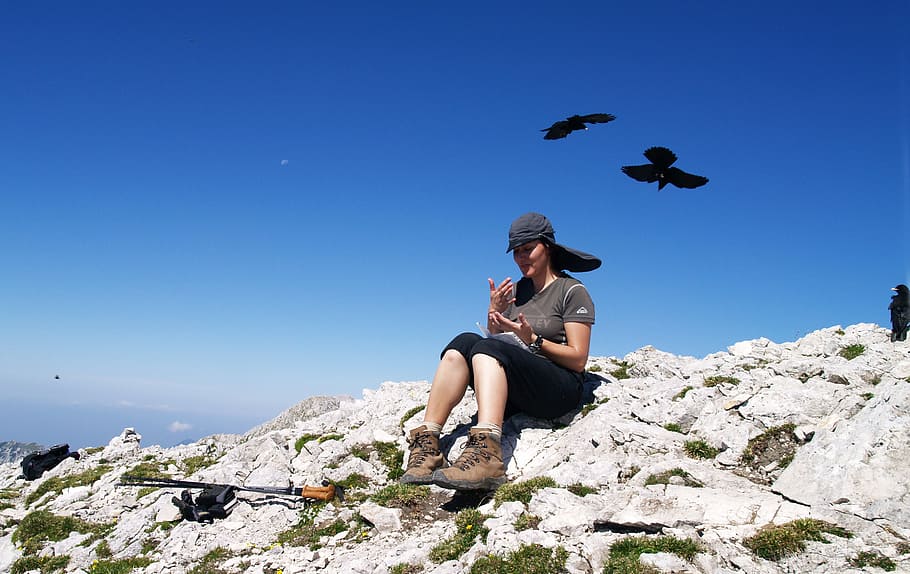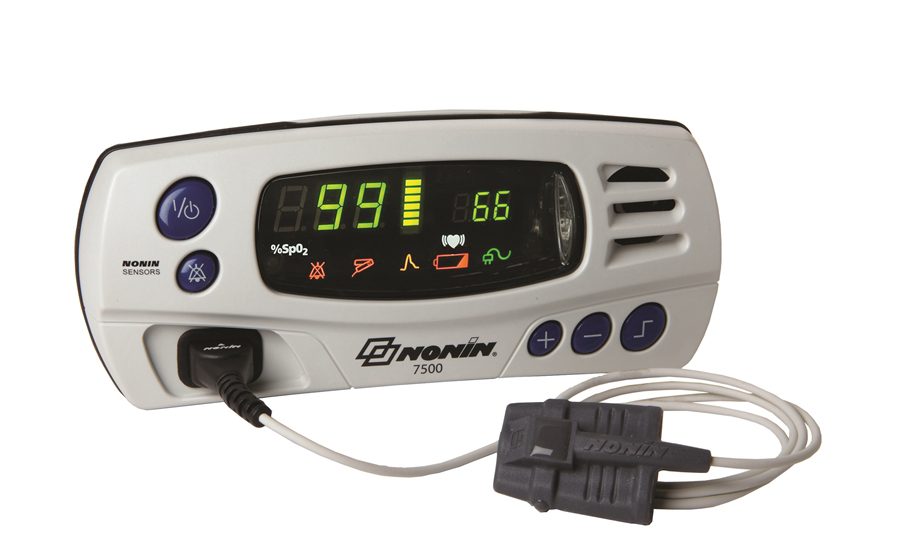Hello, adventurous spirits!
Ever felt dizzy or short of breath while hiking up a mountain or traveling to higher altitudes?
That could be high altitude sickness, a common yet tricky companion for many high-altitude enthusiasts. It's caused by the lower oxygen levels at heights, leading to symptoms like headaches, nausea, and fatigue.
But fear not!
Keeping an eye on your blood oxygen levels is key to staying on top of this challenge. And that's where Concord Health Supply steps in. They offer sleek, smartphone-attached Pulse Oximeters – perfect for those who love blending technology with adventure. These handy gadgets are your trusty sidekick in managing your health as you ascend to new heights.
Let's dive in and learn how to keep high altitude sickness at bay!
Understanding High Altitude Sickness

Let's talk about Acute Mountain Sickness (AMS), a bit of a buzzkill when you're scaling those breathtaking heights. AMS is like that uninvited guest at a party – it can show up unannounced when you climb above 2,500 meters (8,000 feet). The air gets thinner, and oxygen becomes scarce, making your body work overtime.
So, what's happening inside you? Your body, craving more oxygen, speeds up breathing and heart rate. But sometimes, this isn't enough, and your blood oxygen levels can drop. This is where symptoms like headaches, dizziness, and a loss of appetite come into play. It's your body's SOS signal!
Monitoring your oxygen saturation – the percentage of oxygen in your blood – is super crucial here. And guess what? Concord Health Supply has got just the tool for this! Their Pulse Oximeters are like mini sidekicks that keep a close watch on your oxygen levels.
Just clip it onto your finger, and voilà – real-time insights into how well your body's adapting to the altitude. These nifty gadgets are a game-changer for mountain hikers, skiers, or anyone taking the high road. Keep tabs on your health, and you're all set for a safer, more enjoyable high-altitude adventure.
Breathing Techniques to Prevent High Altitude Sickness
Let’s explore these effective breathing techniques to boost oxygen levels and outsmart high altitude sickness on your next mountain adventure.
Deep Breathing

When you're up in the mountains, mastering the art of deep breathing can be your secret weapon against high altitude sickness. Think of it as a mini meditation session for your lungs, giving them the love and oxygen, they crave in those lofty heights.
Deep breathing is all about slow, intentional inhalations and exhalations. You breathe in deeply through your nose, allowing your chest and belly to rise as your lungs fill with air. Then, exhale slowly through your mouth, letting all the air out. It’s like inflating and deflating a balloon — but the balloon is your lungs!
Benefits of Deep Breathing
- Increases Oxygen Intake: Deep breaths mean more oxygen per breath, helping to counter the thin air at high altitudes.
- Reduces Symptoms of AMS: By boosting oxygen levels, it can alleviate dizziness, headaches, and nausea.
- Calms the Mind: It's not just about your lungs; deep breathing can also relax your mind, reducing stress and anxiety.
- Improves Focus: A well-oxygenated brain is more alert and focused, enhancing your overall mountain experience.
Monitoring with a Pulse Oximeter, like the ones from Concord Health Supply, plays a vital role here. These gadgets give you real-time feedback on how effective your deep breathing is. You can literally watch your blood oxygen levels rise as you breathe deeply, ensuring your body gets the oxygen it needs. It’s like having a personal altitude health coach right at your fingertips!
So, next time you're up in the mountains, remember to breathe deeply and let Concord Health Supply's Pulse Oximeter be your guide to a healthier, happier high-altitude journey.
Paced Breathing

When you're up in the mountains, breathing can become a bit of a juggling act. But with paced breathing, you're essentially teaching your lungs to keep up with the altitude. Think of it like a rhythmic dance for your breath. Here's how you can master it:
- Find Your Rhythm: Start by inhaling slowly for about three to four seconds.
- Hold It There: After inhaling, hold your breath for a similar duration.
- Exhale Gracefully: Release your breath gradually over the same time frame.
- Pause and Repeat: Take a brief pause before starting the next cycle.
This technique is all about control and consistency. Now, why bother with this breathing dance?
Benefits of Paced Breathing
- Boosts Oxygen Uptake: Helps your lungs absorb more oxygen, crucial in thin air.
- Reduces Stress: It's like a mini-meditation session, calming your mind and body.
- Enhances Focus: Helps you concentrate on your trek or climb.
- Improves Overall Stamina: With better breathing, you tire less easily, making those long hikes more enjoyable.
And here's a pro tip: Use Concord Health Supply’s Pulse Oximeters to track how this technique benefits you. These gadgets can show improvements in your pulse rate during paced breathing, giving you real-time feedback on your body's response.
It's a smart way to see how well your breathing aligns with your body's oxygen needs, especially when you're way above sea level. So, breathe easy and let technology keep a watchful eye on your health!
Pressure Breathing

As you ascend to the mesmerizing yet challenging heights, “Pressure Breathing” emerges as a superhero technique for combating high altitude sickness. It's not just any breathing – it’s like giving your lungs a power-up to tackle the thin air up there.
What is Pressure Breathing?
Imagine blowing up a balloon in an environment where air is scarce. Pressure breathing involves inhaling deeply and then exhaling forcefully, as if you're trying to blow through a straw. This method helps increase the pressure in your lungs, aiding in more effective oxygen exchange.
Advantages of Pressure Breathing
- Enhances Oxygen Uptake: By increasing lung pressure, it improves the efficiency of oxygen absorption into the bloodstream.
- Reduces Fatigue: It helps minimize the effort your body needs to breathe, combating exhaustion.
- Prevents Altitude Sickness: Regular practice can acclimatize your body faster, reducing the risk of AMS.
But here’s the kicker: How do you know if you’re doing it right? That’s where a Pulse Oximeter from Concord Health Supply comes into play. These compact devices can be a real game-changer.
Using a Pulse Oximeter to Monitor Efficiency
- Real-Time Feedback: By tracking your oxygen saturation, you get immediate insights into how effective your pressure breathing is.
- Adjustment Guide: If your oxygen levels aren’t optimal, you can adjust your breathing technique accordingly.
- Consistency Check: Regular monitoring ensures you maintain the right breathing pattern throughout your ascent.
So, before you gear up for your next high-altitude escapade, consider practicing pressure breathing. And don’t forget to pack a trusty Pulse Oximeter from Concord Health Supply. It's like having a personal health coach right at your fingertips!
Additional Tips to Combat High Altitude Sickness

Conquering those majestic heights is more than just a physical feat; it's about smart preparation and self-care. Alongside the right breathing techniques and a reliable Pulse Oximeter from Concord Health Supply, here are some additional tips to keep altitude sickness at bay:
Stay Hydrated
- Drink Water: Keep your fluid intake high. Dehydration worsens AMS symptoms.
- Avoid Diuretics: Steer clear of caffeine and alcohol as they can dehydrate you.
Acclimatize Properly
- Gradual Ascent: Take your time ascending. Allow your body to adjust to the altitude changes.
- Sleep Lower: If possible, sleep at a lower altitude than the highest point reached in the day.
Mind Your Diet
- Carbohydrate-Rich Foods: Opt for a diet high in carbohydrates for increased energy.
- Light Meals: Eat smaller, more frequent meals to reduce digestion-related discomfort.
Regular Monitoring with Pulse Oximeters
- Track Oxygen Levels: Use Concord Health Supply’s Pulse Oximeters to monitor your blood oxygen saturation.
- Early Detection: Identifying drops in oxygen levels early can help you take corrective actions promptly.
- Personal Health Record: Keep a log of your readings to understand your body’s response to altitude over time.
Remember, high altitude adventures are as much about enjoying the journey as reaching the summit. Paying attention to hydration, acclimatization, and diet, along with regular health monitoring using Pulse Oximeters, ensures a safer and more enjoyable experience. So, pack wisely, prepare well, and let the mountains rejuvenate you, not deplete you!
How Technology Can Aid in High Altitude Health

In today's world, technology is a beacon of safety for high-altitude adventurers. Among the tech marvels, Pulse Oximeters stand out, playing a pivotal role in keeping you healthy in thin air. These nifty devices measure your blood oxygen saturation, a critical health parameter at high altitudes.
Concord Health Supply takes this technology up a notch with their smartphone-attached Pulse Oximeters. Compact and user-friendly, they sync seamlessly with your phone, providing real-time data and trends on your oxygen levels and pulse rate. With features like easy-to-read displays and portability, they're a must-have in your high-altitude toolkit.
Imagine you're trekking up a mountain and feel a bit off. A quick check with your Pulse Oximeter can be a lifesaver, alerting you to dropping oxygen levels before symptoms worsen. It's like having a personal health monitor, right in your pocket, ensuring that your adventure stays thrilling yet safe.




